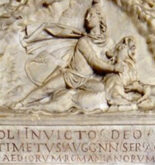Marco Francalanci, Le gride milanesi nel Cinquecento. Circolazione, produttori e funzioni sociali, Università degli Studi di Milano e Universidad de Alcalà, Dottorato di ricerca in Storia, cultura e teorie della società e delle istituzioni (XXXIII ciclo), tutor proff. Ludovica Braida e Antonio Castillo Gómez.
Walter Benjamin in L’opera d’arte al tempo della sua riproducibilità tecnica notava che, nonostante fossero state spese pagine importanti cercando di stabilire se la fotografia fosse arte o meno, non era stata formulata «la domanda preliminare: e cioè, se attraverso la scoperta della fotografia non si fosse modificato il carattere complessivo dell’arte». Mutuando la domanda di Benjamin, si prova qui a offrire alcuni spunti per capire se l’uso della stampa riuscì a intervenire sul “carattere complessivo” della comunicazione istituzionale. Per offrire considerazioni accurate si è circoscritto il problema in diversi sensi, identificando il Cinquecento come arco cronologico di analisi e limitando l’area geografica alla città di Milano. Con lo stesso scopo si è inoltre concentrata l’attenzione su una particolare categoria di scritture, le gride. Questi documenti, che circolavano tanto in forma manoscritta che tipografica, che erano letti ad alta voce da ufficiali cittadini e affissi ai muri delle città, erano prodotti dalle più diverse magistrature con lo scopo primario di comunicare alla popolazione decisioni di carattere amministrativo e regole da seguire. Si tratta quindi di scritture di confine, che dovevano svolgere funzioni sociali importanti, che potremmo definire di raccordo, e che erano diffuse attraverso strategie comunicative fra loro distanti eppure complementari.
Per riflettere sugli effetti che ebbe per questi testi il contatto con l’arte tipografica, si sono studiati i canali attraverso cui si facevano circolare, chi fossero gli ufficiali che avevano in carico la gestione di questo materiale e come questi fossero inquadrati nell’amministrazione milanese. Un aspetto ulteriore tenuto in considerazione è dedicato invece alle logiche per le quali l’amministrazione scelse di commissionare la stampa delle scritture ufficiali a determinati tipografi. Si è mostrata quindi in tal senso l’importanza che ebbero simili incarichi negli affari dei tipografi. Una sezione ulteriore è dedicata poi alle caratteristiche che nel corso degli anni assunsero le gride stampate. In questo senso si sono studiati gli aspetti materiali dei documenti considerandoli in relazione alle funzioni sociali che questi dovevano svolgere. Inoltre considerare i ruoli che ricoprivano all’interno di queste scritture lingue diverse dal volgare, latino e castigliano in special modo ha permesso di far emergere la complessità del panorama linguistico milanese e si è considerata l’importanza politica che lingue diverse da quella corrente potevano assumere nel Cinquecento. Infine si è voluto dare conto della vita plurale di queste scritture, mettendo in luce da una parte gli spazi che vennero mantenuti dalla produzione manoscritta anche nel pieno Cinquecento, mostrando poi quali fossero i processi produttivi che accompagnavano la realizzazione delle scritture tipografiche. È emerso in questo senso il ruolo che mantennero i cancellieri nella produzione delle gride stampate e si sono messe in luce le autonomie dei compositori. Insomma, si è dato conto del rilievo che ha avuto la partecipazione di attori diversi, per incarico e per orizzonti culturali, alle fasi della produzione.
Walter Benjamin in The Work of Art in the Age of its Technical Reproducibility noted that although important pages had been spent trying to determine whether photography was art or not, “the primary question – whether the very invention of photography had not transformed the entire nature of art – was not raised.” Borrowing Benjamin’s question, we made here an attempt to offer some insights into whether the use of print succeeded in intervening in the “entire nature” of institutional communication. To offer accurate considerations, the problem has been circumscribed in several senses: identifying the sixteenth century as the chronological area of analysis and limiting the geographical area to the city of Milan. With the same purpose, we focused on a particular category of writings, the “gride”. These documents, which circulated in both manuscript and printed form, were read aloud by city officials and posted on city walls, were produced by the most diverse magistracies with the primary purpose of communicating to the population administrative decisions and rules to be followed. These were therefore particular writings, which had to perform important social functions of network, and which were disseminated through communication strategies that were distant from each other yet complementary.
In order to reflect on the effects of the art of typography for these texts, we studied the channels through which they were circulated, who were the officers in charge of managing this material, and how these were framed within the Milanese administration. A further aspect considered is the ways in which the administration decided to commission certain printers to print official writings. The importance that such assignments had in the business of the printers is thus shown. A further section is then devoted to the characteristics that printed scripts took on over the years. In this regard, we studied the material aspects of the documents by considering them in relation to the social functions they were to perform. We highlighted the roles that languages other than the vernacular, Latin and Castilian especially, played within these writings. The complexity of the Milanese linguistic landscape emerged from this perspective, and we considered the political importance that languages other than the vernacular could assume in the sixteenth century. Finally, we gave an account of the plural life of these scripts, highlighting on the one hand the spaces that were maintained by manuscript production even at the end of the 16th century, and then showing which production processes accompanied the realization of typographic scripts. In this regard the role that the agents of the chancery maintained in the production of printed scripts emerged, and the autonomies of the compositor were highlighted. In other words, we studied the prominence of the participation of different actors, by role and cultural horizons, in the stages of production.



